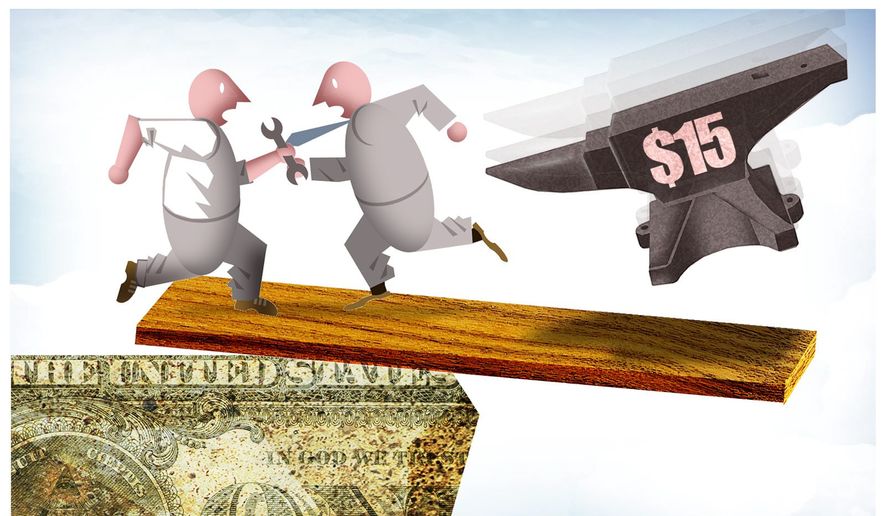OPINION:
The $15 minimum wage is once again a front-page story.
Congressional Democrats, egged-on by the newly minted Biden administration, are working to more than double the federally mandated earnings floor, as well as eliminate the credit for tip income. That policy would raise server labor costs for restaurants by up to 600 percent. While the idea probably won’t survive a procedural hurdle in the latest incarnation of stimulus, the idea is far from being DOA.
The damage of a monster jump in labor costs is predictable in any industry. It accelerates the arrival of what Austrian economist Joseph Schumpeter called “creative destruction.” The creative part is the introduction of self-service.
I’ve chronicled the deep flaws associated with minimum wage hikes in these pages before. The consequences are well documented. Much to the chagrin of labor activists, a 2021 review of the academic literature dating back roughly 30 years consistently finds most economists connect the dots between big wage increases and fewer entry level jobs.
One analysis released last month from economists at Trinity and Miami University finds a federal $15 minimum wage in conjunction with eliminating the wage credit for tip income will add an additional $99 billion (billion with a “B”) in payroll liabilities to company balance sheets. That’s not a cost figure you adjust for with minor operational tweaks.
If greater productivity is needed to offset dramatically higher labor costs, it comes at the expense of current employees and future hiring. Some form of automation and self-service designs become the name of the game. Self-order kiosks at McDonald’s or self-service checkouts at CVS and Safeway are evidence of the broader developments in worker replacement.
The U.S. automation process largely began during the aftermath of World War II in the automobile and steel industries. Japan and Germany were decimated during the war and rebuilt their factories using the latest technology — allowing them to build automobiles at a fraction of the Detroit cost. U.S. car manufacturers were at a competitive disadvantage. They had to deal with fragmented job descriptions (over 10 categories of electricians) for craft workers in union contracts. Remember the old refrain, “that’s not my job” when a simple task needed to be performed?
Detroit’s answer to the larger problem of too many employees: Automation. Robots don’t call in sick or file grievances.
The luddite United Auto Workers (UAW) — a union representing line employees in the car manufacturing plants — didn’t rollover when confronted with the job security threat. In exchange for expanding automation into the facilities, company executives agreed to refrain from laying workers off. Surplus employees were paid handsomely to show up but not to work. Companies were playing an expensive transitional long game waiting for these no longer necessary employees to quit or retire.
Fast forward to 2021 and a $15 minimum wage is threatening to accelerate worker replacement in service industries. In a 2017 study, economists from the London School of Economics and University of California were able to specifically tie minimum wage hikes to increased automation and worker replacement. Big labor still fumes about the threat “unbridled” automation poses to workers, but emphasizes the virtues of raising the wage floor in the same breath. You can’t have it both ways when the price-sensitive consumer has choices.
Raising the minimum wage to $15 an hour while also gutting the tipping system is generally a bad idea. And it should be a nonstarter amid a pandemic that has the service industry on the ropes. Hopefully, legislators will do a deeper dive into the economics behind their perceived free-lunch pay raise. Otherwise, when you find more self-service systems at a favorite restaurant or retail store, you’ll know you’re happily performing a job previously held by someone else.
• Richard Berman is president of Berman and Co. in Washington, D.C.




Please read our comment policy before commenting.